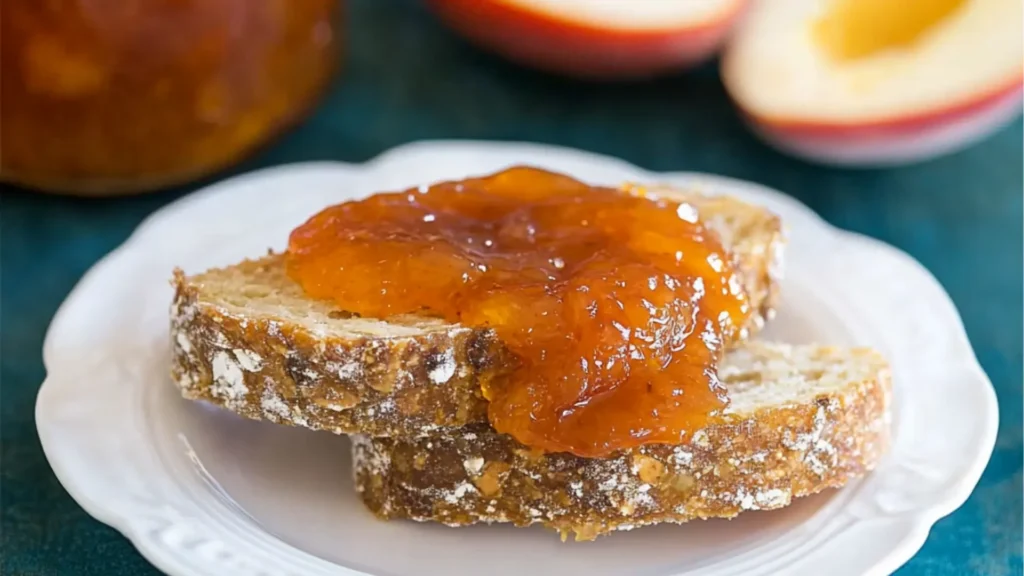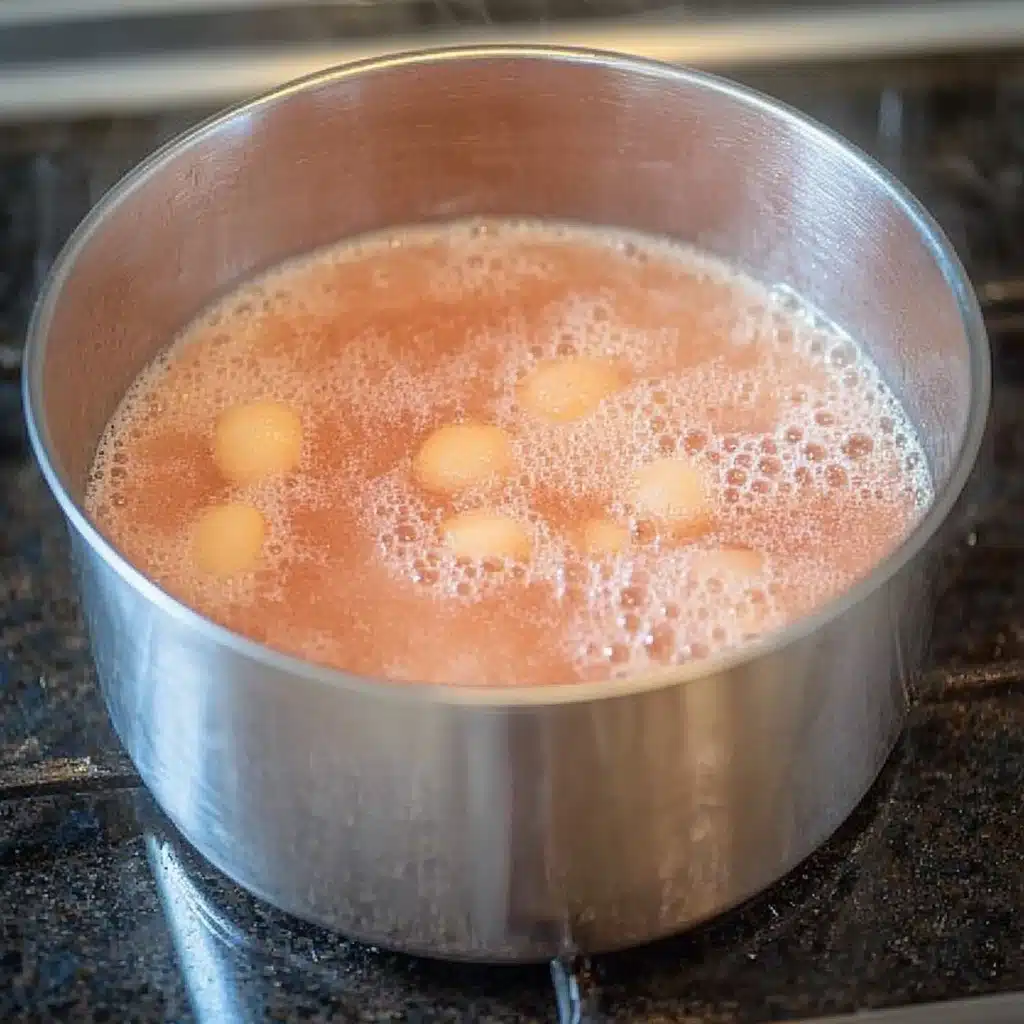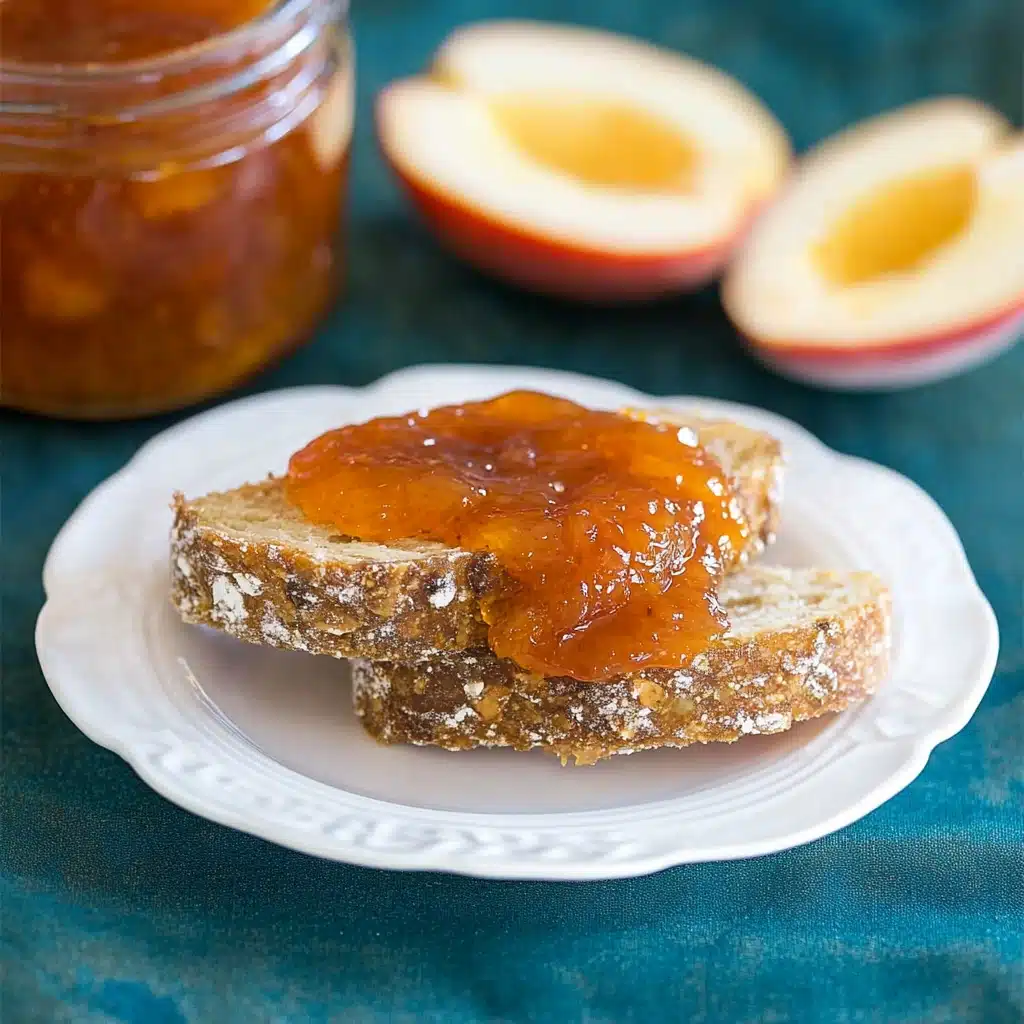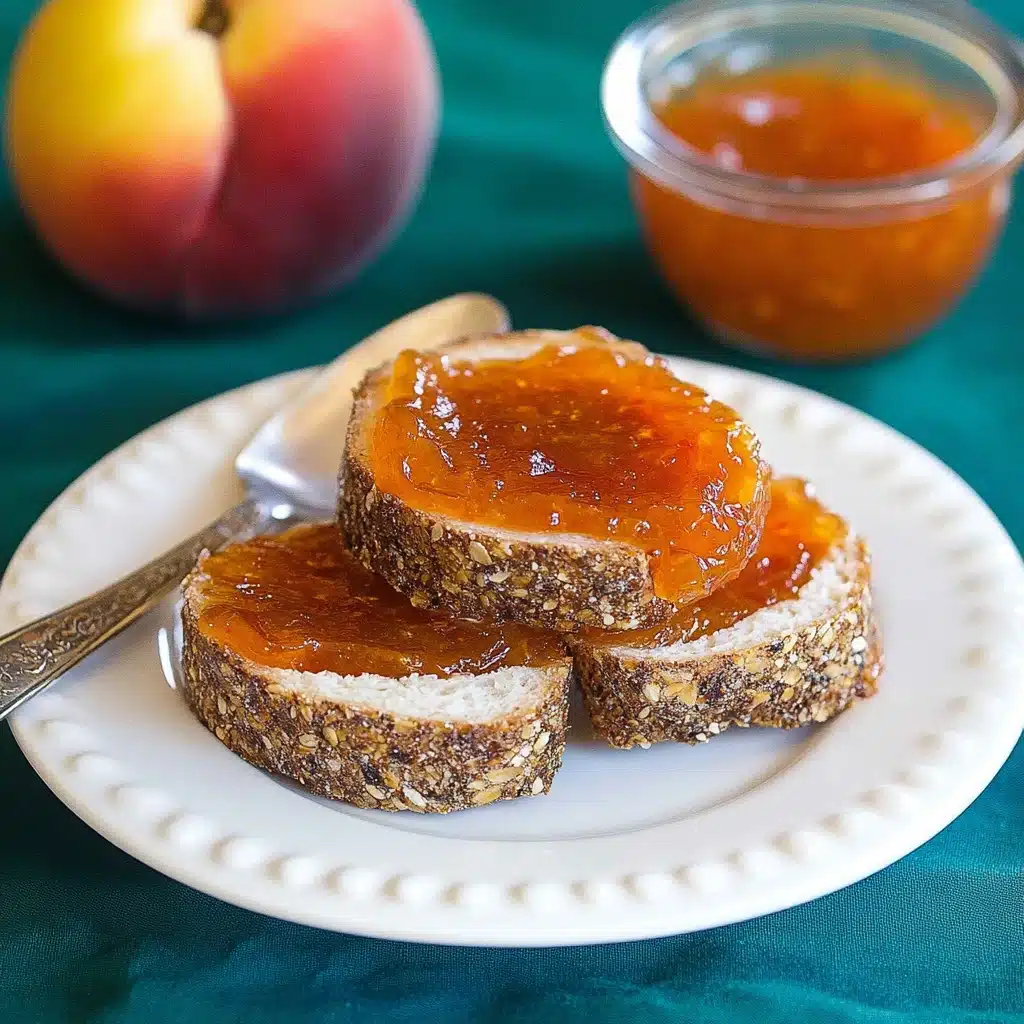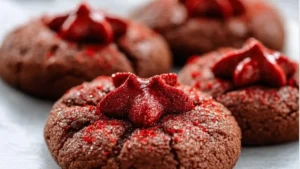There’s something incredibly satisfying about making your own jam. The vibrant color, the glossy spoonfuls, the sweet scent wafting from the stovetop—it all feels like a reward for celebrating the seasons. If you’re new to preserving or just want a fuss-free recipe, this Yummy Small Batch Nectarine Jam is just the thing.
Made with just a few simple ingredients and no pectin, this recipe is ideal for beginners or small households. It’s perfect for those golden, juicy nectarines that are just a little too soft for snacking but too good to waste. And the best part? You don’t need to make 12 jars at once—this recipe gives you a manageable amount with maximum flavor.
Whether you want to spoon it over yogurt, spread it on toast, or give it as a thoughtful homemade gift, this jam is a delicious way to make summer last a little longer.
Table of Contents
Why You’ll Love This Nectarine Jam Recipe
This nectarine jam easy recipe has all the benefits of homemade goodness without the hassle. Here’s why it’s a must-make:
- Small batch: Makes just enough to enjoy without committing to a pantry full of jars.
- No pectin required: Simple ingredients and natural fruit pectin do the job.
- Fast cooking time: Done in under an hour.
- Customizable: Add spices or citrus for your own twist.
- Perfect for preserving nectarines that are slightly overripe or in surplus.
It’s also a great starter project if you’re learning how to preserve nectarines or getting into home canning.
What’s the Difference Between Jam and Jelly?
If you’ve ever stood in the jam aisle wondering what makes each jar different, here’s a quick breakdown:
- Jam is made with crushed or chopped fruit, resulting in a thick, textured spread.
- Jelly uses fruit juice only, yielding a smooth, clear consistency.
- Conserve includes fruit, sugar, and sometimes nuts or dried fruit—this recipe leans toward conserve style, but with a classic jam feel.
For this nectarine jam, you’ll enjoy soft fruit bits in every bite, which makes it ideal for toast, oatmeal, or even layered in desserts.
Ingredients You’ll Need
This recipe uses a simple combination of fresh fruit, sugar, and citrus. Here’s what you’ll need for a small batch (yields about 1½ to 2 cups):
- 500g (1.1 lbs) ripe nectarines, pitted and chopped
- 200g (1 cup) granulated sugar
- 1 tablespoon lemon juice
- Zest of half a lemon (optional, adds brightness)
- Optional flavor boosters: pinch of ground ginger, cinnamon, or vanilla extract
Tip: No need to peel the nectarines—the skins soften beautifully and help the jam set thanks to their natural pectin.
Equipment Needed for Small Batch Jam
You don’t need a full canning setup for this small batch. Just grab these basics:
- Heavy-bottomed saucepan or preserving pan
- Long-handled spoon or spatula
- Clean glass jars with lids
- Funnel (optional, but helpful)
- Digital kitchen thermometer (optional for checking set point)
- Sterilized jars if you plan to store long-term
For those making nectarine jam for canning, make sure to follow proper sterilization and sealing methods.
Step-by-Step Instructions for Making Nectarine Jam
This is a quick stovetop method. Let’s break it down:
Step 1: Prep the fruit
Wash the nectarines well. Remove pits and chop into small pieces. Leave the skin on for color and structure.
Step 2: Combine and macerate
In your saucepan, combine chopped nectarines, sugar, lemon juice, and zest. Let sit for 15–30 minutes to draw out the juices. This step helps dissolve the sugar and soften the fruit.
Step 3: Cook the jam
Place the pot over medium-high heat. Bring to a gentle boil while stirring. Reduce heat slightly and let the mixture simmer, stirring often to prevent burning.
Step 4: Watch for the set point
After 20–30 minutes, the mixture will reduce and thicken. Use the back-of-the-spoon test: drag your finger through a spoonful—if it leaves a clear path, it’s done. Alternatively, aim for 220°F (105°C) on a thermometer.
Step 5: Skim foam and cool
Skim off any foam from the top. Ladle the jam into clean jars. If storing in the fridge, let cool before sealing. For longer shelf life, proceed with water bath canning.
Nectarine Jam for Canning vs Freezing
Not sure if you should can or freeze your jam? Here’s a quick comparison:
Freezer Jam:
- Quickest method
- Store in clean jars or containers
- Lasts 2–3 weeks in the fridge, 3–4 months in the freezer
- No sterilization required
Canning (Water Bath):
- Longer shelf life (up to a year unopened)
- Requires sterilized jars and a 10-minute water bath
- More effort but great for gifting or pantry storage
This recipe works beautifully as a nectarine freezer jam recipe for small households or short-term use.
Tips for the Perfect Nectarine Jam Texture and Flavor
- Use ripe but firm nectarines: Overripe fruit contains more water and may result in a looser set.
- Don’t overcook: Once it thickens, take it off the heat. Overcooked jam can become too stiff or caramelized.
- Add lemon: It helps preserve color and balance sweetness.
- Stir often: To prevent sticking or burning, especially in the final 10 minutes.
- Taste as you go: Adjust sweetness, acid, or add-ins as needed.
This recipe is forgiving and rewards careful attention with vibrant flavor.
How to Preserve Nectarines Beyond Jam
Love nectarines and don’t want to waste a single one? Try these preservation methods:
- Nectarine Chutney: A spiced, savory condiment perfect with rice or roasted vegetables
- Roasted Nectarines: Freeze roasted slices for topping oatmeal or desserts
- Nectarine Compote: Cook fruit with sugar and spices until soft and syrupy
- Dried nectarines: Slice thin and dry in a dehydrator or low oven
- Frozen nectarines: Slice and freeze with lemon juice for smoothies or baking
Knowing how to preserve nectarines means enjoying their summer flavor long after the season ends.
Easy Flavor Variations and Add-Ins
Give your nectarine jam a signature twist with these add-ins:
- Ginger + Lemon Zest: Fresh and zingy
- Vanilla Bean: For a soft, dessert-like aroma
- Cinnamon or Nutmeg: Adds warmth for fall-inspired flavors
- Orange Zest or Juice: Brightens and deepens the fruitiness
- A touch of chili: For a sweet-heat jam to pair with cheese
Or turn it into nectarine chutney with vinegar, mustard seeds, and onion.
Common Mistakes to Avoid When Making Jam
Even small batch jams can be tricky the first time. Avoid these common errors:
- Not using enough sugar: It helps the jam set and preserve
- Skipping the lemon juice: You need the acid for flavor and safety
- Overcooking: Leads to a hard, sticky jam
- Not skimming the foam: It can affect texture and clarity
- Inaccurate measuring: Weigh ingredients for the best results
Take your time and trust the process—homemade jam is worth it.
How to Store and Use Your Homemade Nectarine Jam
Once cooled and sealed, here’s how to store your jam:
- In the refrigerator: Lasts up to 3 weeks in a sealed jar
- In the freezer: Store for up to 4 months in freezer-safe jars
- Canned in a water bath: Up to 12 months in a cool, dark place
Delicious Ways to Use It:
- On sourdough toast or crumpets
- Swirled into Greek yogurt
- As a glaze for roasted carrots or tofu
- Paired with vegan cheese boards
- Baked into thumbprint cookies or jam bars
- Added to overnight oats or chia pudding
This nectarine recipe adds sweetness to both sweet and savory dishes.
Serving and Gift Ideas
Want to impress your friends or make someone’s day?
- Gift jars with handwritten labels for birthdays or housewarmings
- Pair with homemade scones or fresh bread as a brunch bundle
- Use in a DIY picnic basket with cheese, crackers, and fruit
- Wrap in fabric or twine for a rustic, farmhouse-style presentation
Jam makes a lovely, thoughtful gift—especially when it’s this flavorful.
Frequently Asked Questions (FAQ) About Nectarine Jam
Do I need to peel the nectarines?
No! The skins soften during cooking and add color and natural pectin.
Can I use white nectarines?
Yes. White nectarines have a milder flavor but work just as well.
Can I reduce the sugar?
You can, but it may affect the set and shelf life. Consider storing it in the fridge or freezer if reducing sugar.
Can I double this recipe?
Yes, but small batches are easier to control for texture. If doubling, increase cook time slightly and stir often.
Is this recipe safe for canning?
Yes, as long as you follow safe water bath canning procedures and sterilize jars properly.
What if my jam doesn’t set?
Let it cool—it may thicken as it rests. If not, you can reheat and simmer again, or use it as a fruit sauce.
Final Thoughts and Call to Action
This Yummy Small Batch Nectarine Jam is everything a homemade preserve should be—sweet, tangy, jewel-toned, and full of flavor. It’s a simple way to capture the magic of summer nectarines in a jar, with no special tools or huge batches required.
Once you try this recipe, you’ll never want to go back to store-bought jam. It’s that fresh, that easy, and that satisfying.
If you enjoyed this recipe, don’t forget to share it, leave a comment with your favorite add-ins, and subscribe to the blog for more small-batch, seasonal recipes straight from the heart of your kitchen.
PrintYummy Small Batch Nectarine Jam : Perfect for Summer
- Total Time: 45
Description
There’s something incredibly satisfying about making your own jam. The vibrant color, the glossy spoonfuls, the sweet scent wafting from the stovetop—it all feels like a reward for celebrating the seasons.
Ingredients
- 500g (1.1 lbs) ripe nectarines, pitted and chopped
- 200g (1 cup) granulated sugar
- 1 tablespoon lemon juice
- Zest of half a lemon (optional, adds brightness)
- Optional flavor boosters: pinch of ground ginger, cinnamon, or vanilla extract
Instructions
Step 1: Prep the fruit
Wash the nectarines well. Remove pits and chop into small pieces. Leave the skin on for color and structure.
Step 2: Combine and macerate
In your saucepan, combine chopped nectarines, sugar, lemon juice, and zest. Let sit for 15–30 minutes to draw out the juices. This step helps dissolve the sugar and soften the fruit.
Step 3: Cook the jam
Place the pot over medium-high heat. Bring to a gentle boil while stirring. Reduce heat slightly and let the mixture simmer, stirring often to prevent burning.
Step 4: Watch for the set point
After 20–30 minutes, the mixture will reduce and thicken. Use the back-of-the-spoon test: drag your finger through a spoonful—if it leaves a clear path, it’s done. Alternatively, aim for 220°F (105°C) on a thermometer.
Step 5: Skim foam and cool
Skim off any foam from the top. Ladle the jam into clean jars. If storing in the fridge, let cool before sealing. For longer shelf life, proceed with water bath canning.
Notes
- Use ripe but firm nectarines: Overripe fruit contains more water and may result in a looser set.
- Don’t overcook: Once it thickens, take it off the heat. Overcooked jam can become too stiff or caramelized.
- Add lemon: It helps preserve color and balance sweetness.
- Stir often: To prevent sticking or burning, especially in the final 10 minutes.
- Prep Time: 10
- Cook Time: 35
- Category: appetizer
- Cuisine: American
Nutrition
- Serving Size: About 1½ to 2 cups (10–12 servings)
- Calories: 35
- Sugar: 8g
- Carbohydrates: 9g
- Fiber: 0.5g
Keywords: Yummy Small Batch Nectarine Jam

